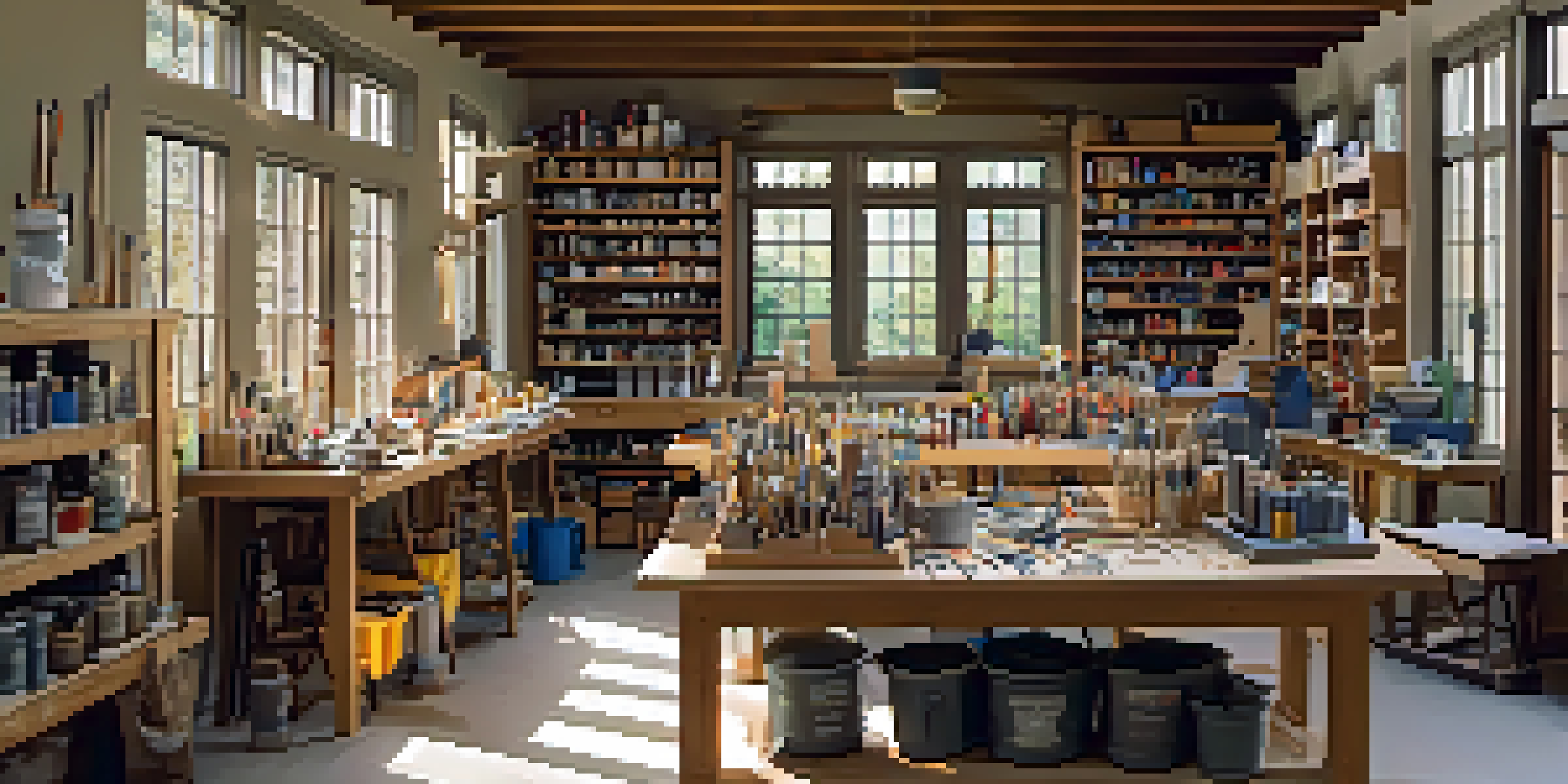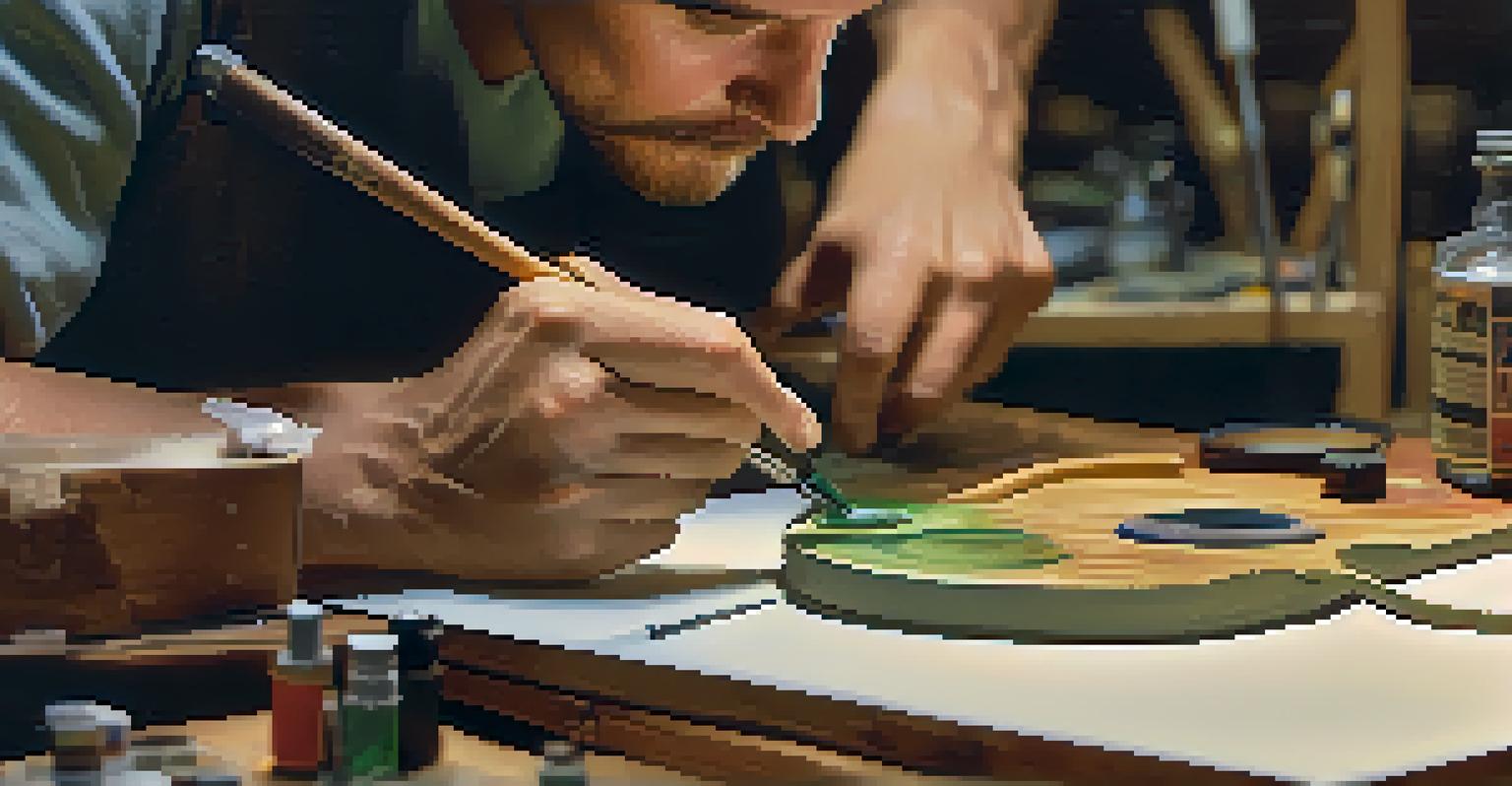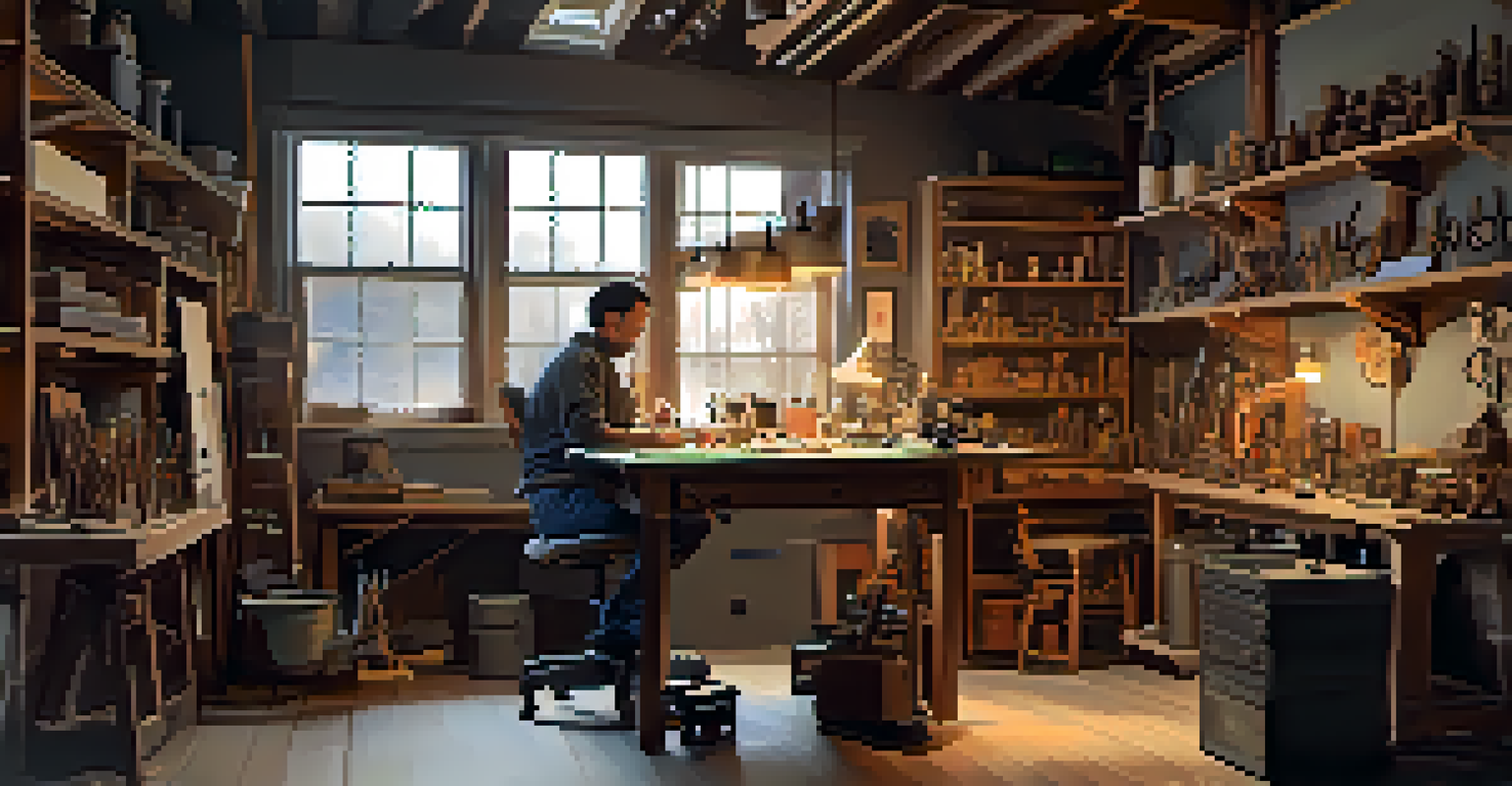Building a Scale Model Workshop: Tips and Tricks

Choosing the Right Space for Your Workshop
Selecting the ideal space for your scale model workshop is crucial. Consider a location with ample natural light and good ventilation, as these elements can enhance your creativity and comfort while working.
The more I practice, the luckier I get.
The size of the space matters too; ensure it’s large enough to accommodate your projects, tools, and materials without feeling cramped. A clutter-free environment fosters focus and productivity.
If possible, choose a dedicated room or area that can be organized efficiently. This way, you can leave your projects in progress without the need to pack everything away after each session.
Essential Tools and Materials for Scale Modeling
Having the right tools and materials is fundamental to scale modeling success. Start with the basics, such as cutting tools, glue, and paints, and gradually build your collection based on your specific projects.

Consider investing in high-quality tools, as they can significantly improve your work's precision and finish. For example, a good craft knife can make intricate cuts much easier than a standard utility knife.
Choose Your Workshop Space Wisely
Selecting a well-lit and organized space enhances creativity and productivity in scale modeling.
Don’t forget about storage solutions! Organizing your tools and materials not only saves time but also helps maintain a tidy workspace, which is essential for any creative endeavor.
Organizing Your Workspace for Maximum Efficiency
An organized workspace is key to maintaining focus and efficiency while building models. Designate specific areas for different tasks, such as cutting, painting, and assembly, to streamline your workflow.
Creativity is intelligence having fun.
Utilize shelving, drawers, and toolboxes to keep your materials sorted. Labeling containers can save you time when searching for that elusive piece or color.
Incorporating a comfortable chair and adjustable lighting can enhance your work environment, making long modeling sessions more enjoyable and less straining on your body.
Incorporating Good Lighting for Detail Work
Proper lighting is essential in a scale model workshop, especially for detail-oriented tasks. Natural light is ideal, but when that’s not available, invest in good quality LED lights that mimic daylight to reduce eye strain.
Consider adding task lighting, such as a magnifying lamp, to help with intricate details. This can make a world of difference when painting tiny components or assembling delicate parts.
Essential Tools Boost Modeling Success
Investing in quality tools and effective storage solutions can significantly improve your modeling experience.
Position your lights strategically to minimize shadows and glare, ensuring you can see your work clearly from all angles. This attention to lighting can elevate the quality of your finished models.
Choosing the Right Scale for Your Models
The scale of your models will affect the complexity and level of detail you can achieve. Popular scales include 1:18, 1:24, and 1:72, each offering unique challenges and rewards.
When starting out, it might be wise to choose a larger scale, as they tend to be easier to handle and allow for greater detail. As you gain confidence, you can explore smaller scales for more intricate projects.
Remember, the scale you choose can also impact the tools and materials you'll need, so plan accordingly. It’s all about finding the right balance between challenge and enjoyment.
Developing Your Skills with Practice and Patience
Like any craft, scale modeling requires practice and patience. Don’t be discouraged by initial setbacks; every model you build is a learning opportunity.
Consider starting with simpler kits to hone your skills before tackling more complex projects. This gradual approach helps you build confidence and competence without feeling overwhelmed.
Stay Inspired and Keep Practicing
Engaging with the modeling community and setting personal challenges can help maintain motivation and skill development.
Joining a community of model enthusiasts can also provide valuable feedback and support. Sharing your progress and learning from others can enhance your skills and keep your passion alive.
Exploring Online Resources and Communities
The internet is a treasure trove of resources for scale modelers. From tutorial videos to forums, you can find a wealth of knowledge to assist you in your modeling journey.
Don’t hesitate to reach out to online communities, where you can ask questions, share your work, and connect with fellow enthusiasts. These interactions can inspire new ideas and techniques.

Additionally, many manufacturers offer online guides and tips specific to their products, which can be incredibly helpful when working on particular models.
Staying Inspired: Finding New Projects
Inspiration can sometimes wane, but there are countless ways to reignite your passion for scale modeling. Visiting museums, watching documentaries, or browsing model galleries can spark new ideas.
Consider setting personal challenges, such as completing a model in a specific time frame or trying a new technique. These goals can motivate you to keep pushing your creative boundaries.
Lastly, don’t forget to document your progress. Taking photos of your builds not only allows you to reflect on your growth but can also inspire others in the modeling community.